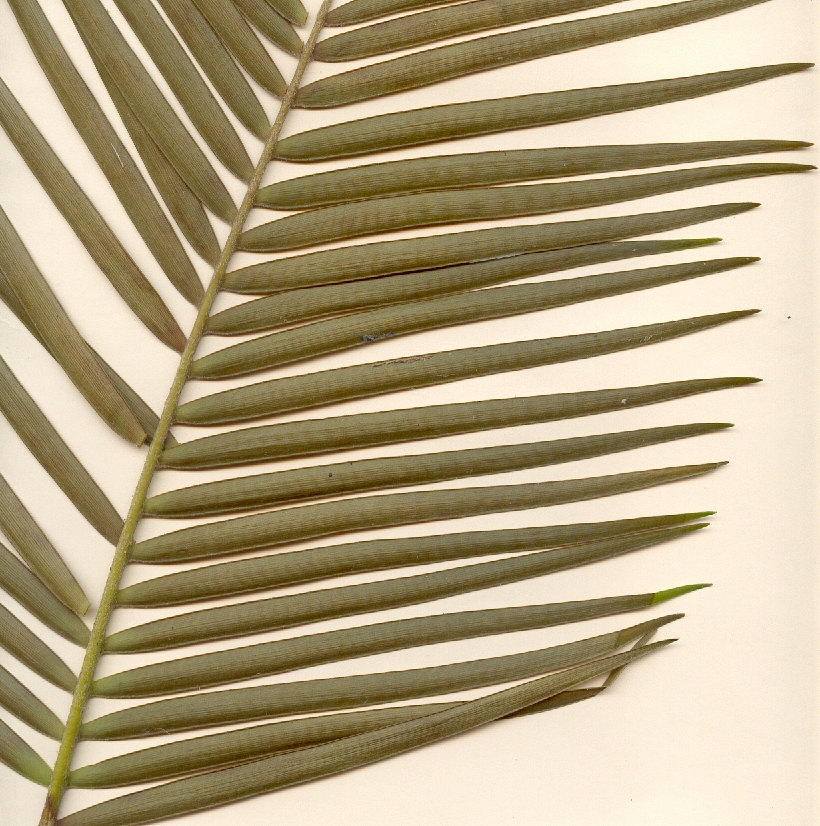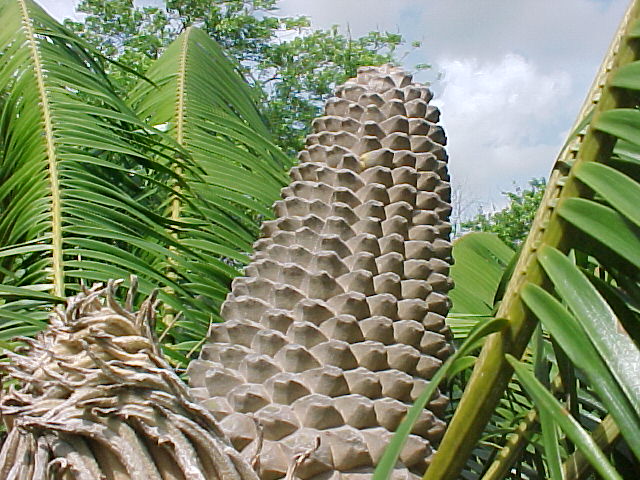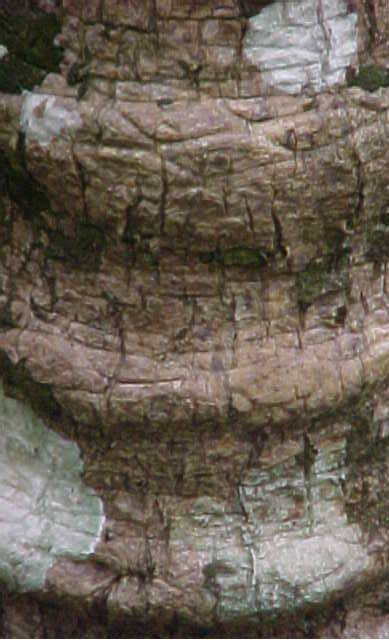Tree with upright trunk, cylindrical, 6-8(-10) m high, about 60 cm diameter, covered with the remains of leaf-bases and cataphylls, simple or occasionally branching; young leaves pallid green, covered with fine vestiture; mature leaves 6-40 or more, forming a panicle at top of trunk, falling every two years, always leaving persistent rachis and petiole (a very distinctive characteristic), pinnate, 50-60 cm long, 25-30 cm wide, forming inverted V; petiole 10-15 cm long, not spiny, wider at base; leaflets numerous, 15-25 cm long, more or less 0.8 mm wide, not spiny, linear-lanceolate, slightly revolute, apex rounded; male cones 25-30 cm, yellow-brown, densely pubescent, sporophylls 2-2.5 cm long, 1.5-2 cm wide; female cones 50-90 cm long, broadly cylindrical, yellow-brown, covered by dense vestiture, macrosporophylls about 5 cm long, with two seeds; seeds 4 cm long with one pink to red sarcotesta; dioecious species.
Common names: corcho, palma corcho.
Species endemic to Pinar del Río, not a true palm; because of the antiquity of the species, its reproduction problems, and the fragilty of its surrounding ecosystem, it is considered under great threat.





